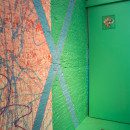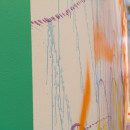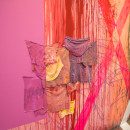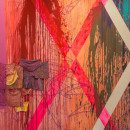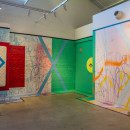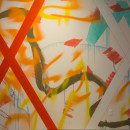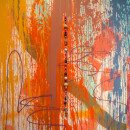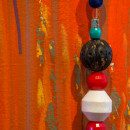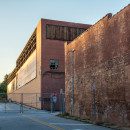CAM Raleigh (Contemporary Art Museum) is pleased to present The Imaginary Architecture of Love by Sarah Cain. Cain has created a monumental painting directly on the walls and floor of the Main Gallery. As is typical of her practice, Cain has embedded objects found in situ and layer paintings made on traditional stretched canvases within the work.
Cain is committed to translating lived experience into a language of color and form. Her investment in abstraction is based on her belief in its capacity to express ideas that are beyond language. Building upon a present tense call-and response to the environment at hand, Cain attempts to expand the potential of painting by challenging its conventions. In advance of making a work on site, Cain gathers materials, inspiration, and visual cues from the outside world. Through improvisation based on her gathered materials and impressions, she makes decisions about the palette, gestures, and composition on site. The Imaginary Architecture of Love flows from the museum’s entrance lobby into the main gallery, moving through the former produce warehouse’s corners and cracks while responding to structural details such as arched windows and poured-in-place columns.
As with collaged found objects in her paintings, the titles of Cain’s works are derived from her immediate experience of the world. The Imaginary Architecture of Love is a song from HUSH HUSH’s album Pisces Iscariot. Cain’s studio based paintings and ephemeral works on site often deal with human intimacy and relationships. The Imaginary Architecture of Love refers to the ways in which peoples’ expectations and intentions build structures around relationships that inevitably transform over time. For this exhibition, Cain has created abstract portraits of the complex dynamics of navigating both architectural and emotional spaces.
This exhibit was impressive in both its massive size and simple nature. It was interesting to explore and the comfortable seating give you the opportunity to sit and study a section of the piece or people’s reactions to it.




